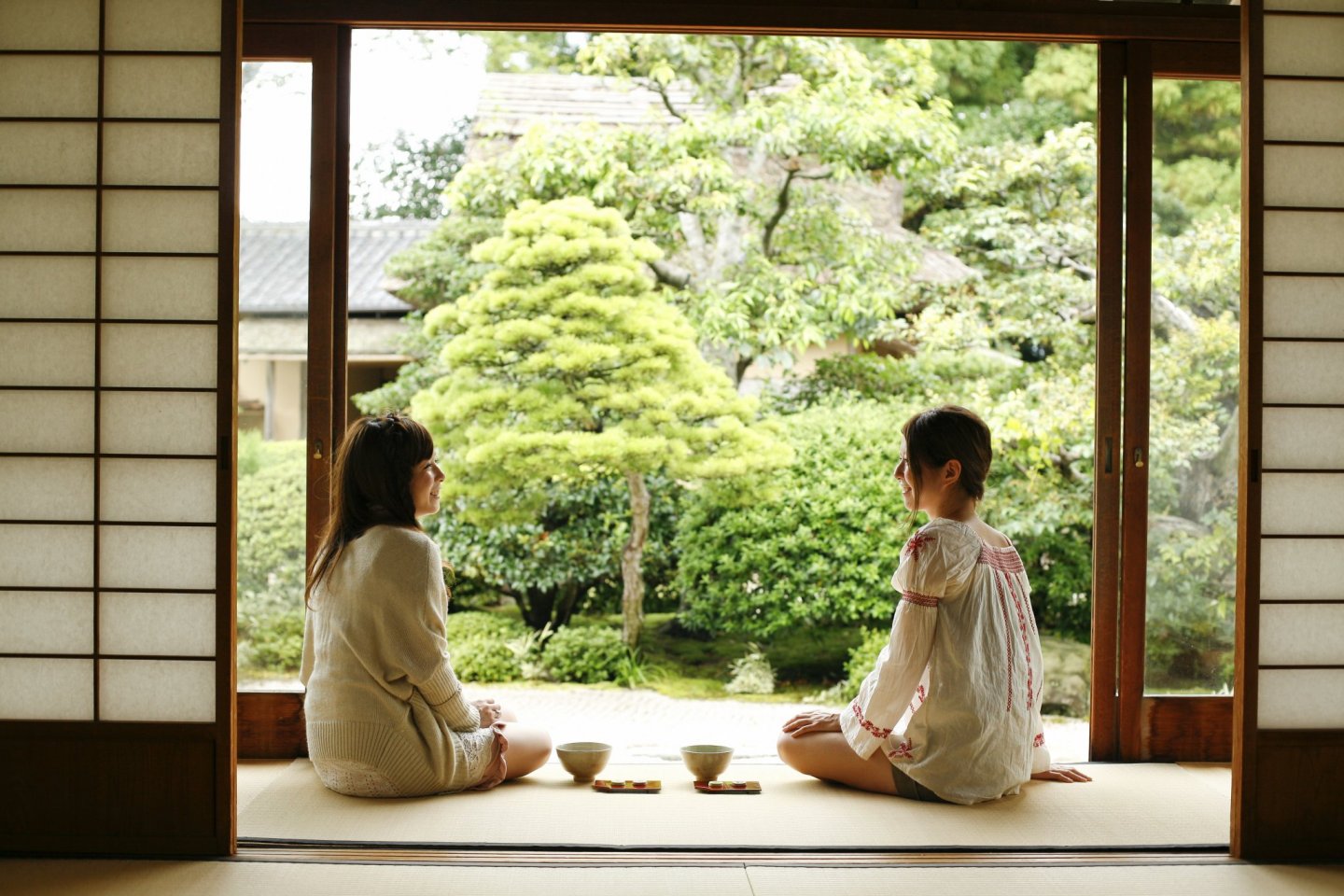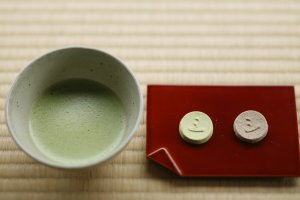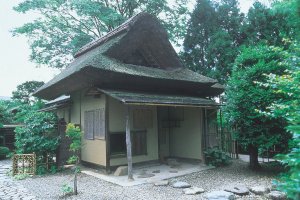Neither Matsue nor Shimane Prefecture are known for matcha production, yet Matsue has become known as one of Japan’s three big “Tea Cities” due to the people’s love of and pride in their tea culture. Traditional tea ceremonies can be found in every corner of Matsue, and even more common are traditional wagashi (Japanese confectionery) specialty shops and tea-bowl centric ceramic shops, reflecting the significance of matcha consumption at home. Matsue has many unique ways to enjoy tea culture and is a fantastic spot for those interested in traditional tea ceremonies.
A bit of context: Matsue’s connection to and fondness for the tea ceremony dates back to just over 200 years ago when Matsudaira Fumai became the lord of Matsue. Already a tea master, he spread his love for tea ceremonies with the people of the domain and his unique tea ceremony school, Fumai-ryu (Fumai School or Fumai-style) remains dominant with Matsue’s tea masters to this day, in addition to being one of the popular tea ceremony schools practiced around Japan.

Fumai School of Tea Ceremony
Unique characteristics of the Fumai School of tea ceremony include the bowing style. While in most schools, you begin your bow by placing your hands on the ground directly in front of yourself, open with palms facing the ground, and your thumbs and fingers forming an open triangle, in Fumai’s style, you place your hands ahead and to each side, with your hands closed and your knuckles on the ground. The reason for this is that Fumai-ko (or lord Fumai) was of the samurai class, and thus his style was designed with samurai and lords in mind. The wagashi sweet selection continues to follow Fumai’s specifications, in particular, his three favorites, Wakakusa (“young grass”), Yamakawa (“mountains and rivers”), and Natane no Sato (“rapeseed village”). These very sweet treats go excellently when eaten just before matcha with its bitter edge.

Meimei-an Tea House
The best place to enjoy the Fumai style tea ceremony, and learn about the man himself, is the tea house he had constructed in 1779, Meimei-an. The tea house is located near Matsue Castle (about a 10-minute walk from the central keep) and is a very interesting experience. The tea house itself is maintained but small and guests are only allowed to look inside. However, a tea room exists where guests can experience a traditional Fumai-style tea ceremony while observing the beautiful gardens and the classic tea house. The view from the front entrance is enough reason to visit as the site is famous for having the best view of Matsue Castle. A circular stone at the top of the stairway denotes the easiest place to stand to get a view unbridled by modern buildings or roads, where you can enjoy Matsue Castle in its Edo Period appearance.

Entrance to the gardens to view the tea house is 410 yen, or 200 yen with a foreign passport.
The best part about tea ceremonies in Matsue is how casually you can enjoy them. There are many places you can do this, such as Café Kiharu in Matsue History Museum beside the castle, while aboard the Horikawa Sightseeing Boat which travels around the castle moat (tea ceremony boats are only available for special occasions), and at various other tea houses around the city (search “Matsue tea stall” for a list of these, personally I recommend Nakamura Tea Stall for good English service).

Café Kiharu in Matsue History Museum has a great atmosphere, a beautiful view of the museum’s garden and the wagashi master’s creations there are among the most popular wagashi in the region, and are a great set with matcha tea. It is a great place to stop for a quick tea break while sightseeing around the castle and castle town.
































